Family members make up majority of in-home caregivers due to help’s high cost, taking on all-consuming sometimes overwhelming role
Debbie Aguilar’s husband, Roberto, had a major stroke that paralyzed his right side and rendered his speech almost unintelligible. It happened during the pandemic, so she was allowed in the skilled nursing home only one day for training before he was sent home.
“Life turned upside down. My husband used to do everything,” she said. “I never paid bills since I was 18. He even made the shopping lists when I picked up groceries.”
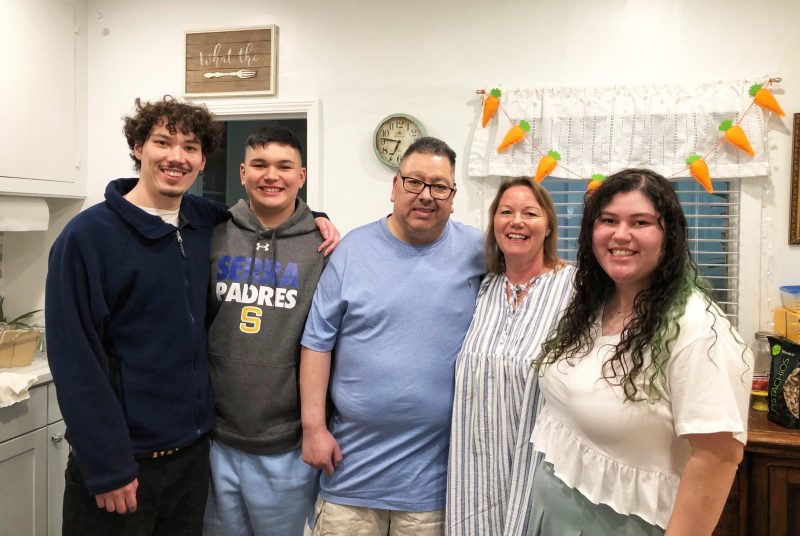
Rose Garcia’s first words when asked about the husband she has been tending to for the past three years, were, “I hate him.”
She had been married to Alex Sajkovic for 26 years when he was diagnosed with ALS, a progressive neurological disease that ate away at his mobility and strength. He also had a frontotemporal disorder, a type of dementia. Since then, they argue a lot, she said; he is controlling and sometimes rages. “I can’t please him. The illness has made him so angry and hurt. He demeans and belittles me. I try to get myself out of the way.”
Margaret Graf, whose husband Paul died after a six-year battle with Alzheimer’s Disease, remembers her years of caregiving as “one of the hardest things I ever did.” His care consumed her 24 hours a day, seven days a week. “It’s not only the physical work, the activities of daily living – bathing, dressing, feeding, helping him get out of bed – but this is my husband, helpmate, lover, best friend.”
Still, when he died, she said, “it felt like someone had taken this huge burden off my life.”
It can be easy to assist aging spouses or parents when their needs are limited and transient, but it is a different matter when the help they need is both continuous and progressively expanding. Care can be, or become during the evolution of an illness, far more complex than brewing a soothing cup of tea, handing out some pills or doing the laundry. It can encompass, bathing, feeding and dressing but also medical or nursing tasks that require training, such as wound care, giving shots or lifting people who are immobile.
Coping with physical and cognitive loss
Yet, the “graying of America,” the desire of older people to age at home and the cost-saving benefits of home over institutional care has plunged increasing numbers of people, often seniors themselves, into the caregiving role. In San Francisco and across the country, spouses, immediate family, especially daughters, other relatives and sometimes friends who are mostly unpaid carry the crushing burden of in-home care.
| See “Caring for aging parents, sick spouses keeping millions out of work,” Washington Post, April 2022 |
These “informal” caregivers represent 75 to 80 percent of total care hours for older Americans, according to a 2020 survey on Family Caregivers for Adult Recipients by the AARP and the National Alliance for Caregiving. Most of the 23,000 older adults covered by In-Home Supportive Services, San Francisco’s Med-Cal program, are being tended by family members – who are encouraged but not required to have any particular training.
Graf feels fortunate to have had good friends, a supportive network and the ability to hire help. Having once been a nurse made it somewhat easier, along with the support of her daughter, who lived nearby, and her son. But “he was their father,” she stressed, “and I needed to help them cope with his dementia and their own impending loss.”
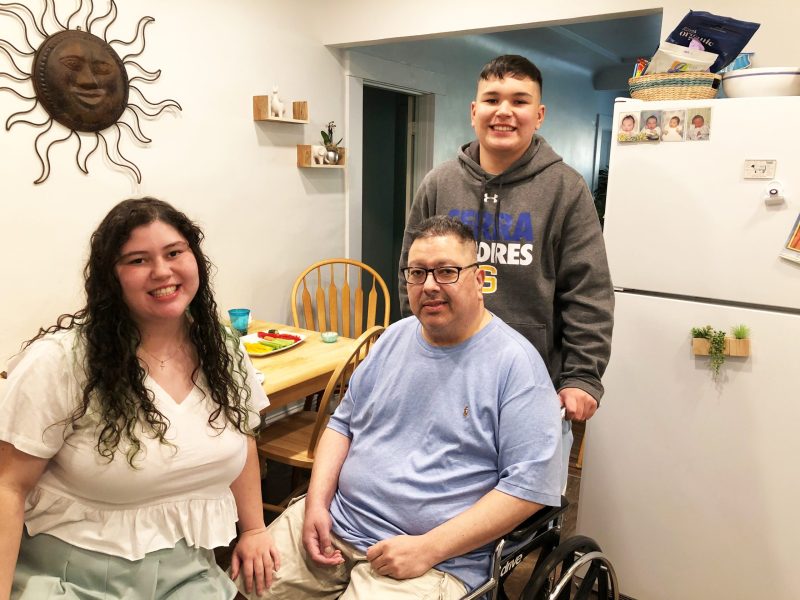
Aguilar readily acknowledges she couldn’t handle her husband’s care without help from friends, and her children, ages 22, 18 and 14. “They’ve become more responsible,” she said. “They cook dinner, clean, bathe, and dress their pop, and we all try to guess what he’s saying. We were a close family before, we’re closer now.”
They can’t afford outside help. Besides, “Roberto doesn’t want anyone else,” she said.
Twice a week, two end-of-life doulas from Compassionate Walk feed Garcia’s husband lunch. Old friends sometimes visit him. Once, friends arranged a trip to a Giants game for them. Occasionally, she manages to meet a friend for coffee or drinks. Basically though, she is on her own. They have no children. When she’s not working at their natural-stone brokerage, she’s confined to the home. “He’s mad because normally we’d be doing things. Now, he won’t let me out of the house.”
Fighting for control
Their relationship had always been difficult, she said. Garcia, the first in her family to graduate college, is from an extended family of 25. Her husband was an only child, and she felt, an unrealistic dreamer. They shared their business but couldn’t agree on how it should be managed. When he lost his driver’s license in 2020, she ended up taking over. But she said he won’t let go.
On most weekdays, after getting her husband up, cleaned and fed—a several-hour process—Garcia drives to the office. Then it’s home again, where Sajkovic insists she tell him everything that happened at work. “He wants control; he thinks he’s boss. I have to meet with him every day to review what’s going on and then he disapproves.”
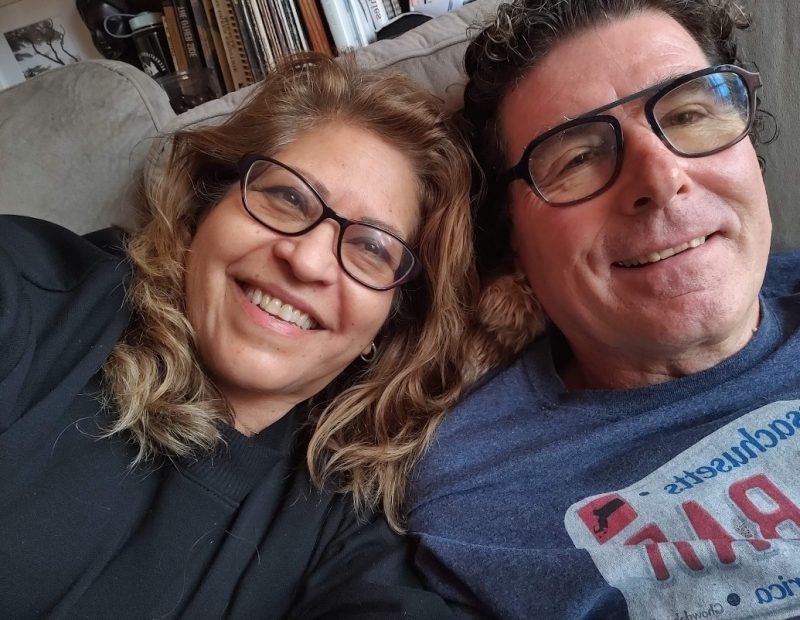
They tried two sessions of couples counseling after his diagnosis but gave that up. It wasn’t helping, she said. Then there’s the matter of what happens when he’s gone. “He doesn’t want to discuss it. There’s no winning for me. It’s so daunting.”
They thought an electric wheelchair would make life easier, she said. “He could get out and spend time in the neighborhood park,” she said. They got a grant for one from The Family Caregiver Alliance, but there’s the challenge of those 44 steps to the street. They were ecstatic when they received a grant for a stairlift through the Safe at Home program of Rebuilding Together. But their landlady said no. So, Garcia contacted Legal Assistance for the Elderly, whose suit won her agreement. They’re still looking for a licensed contractor to install it.
No peace of mind
When Graf’s husband became ill, both were retired—he from his position as a pulmonary physiologist at the University of California-San Francisco; she from her second career as a professional liability attorney—when Paul was diagnosed with Alzheimer’s. “At first it was slow, taking away the keys to the car, downsizing our social life, household responsibilities. Then it grew faster—more care, always looking for what I could do to stimulate those one or two remaining brain cells. In the end it felt like a ski slide,” and then it was over.
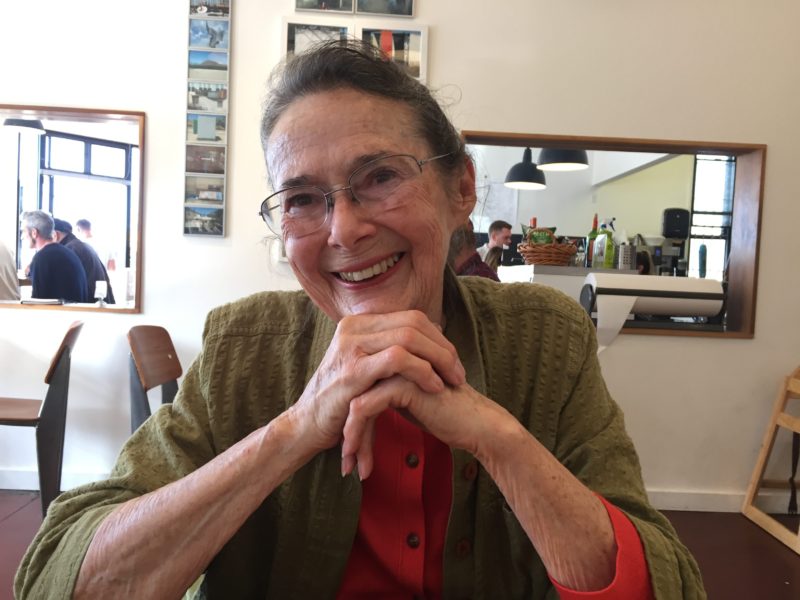
While the person who is sick is the most important person in all this, the “star of the show,” Graf said, she knew it was important to take care of herself. “Worse thing you can do is keep it hidden. What makes it hard is feeling alone. You go through a period where you’re feeling sorry for yourself 24/7—you don’t have peace of mind.”
Coffee with friends, a UCSF support group, hiring in-home caregivers when she couldn’t handle him alone, and then bringing in hospice. “You need to use every resource you can find.”
A Christmas celebration with the family at her son’s house in San Diego, she said, was “the first time she laughed in months, years. I saw the world again. It was absolutely a magic pill.”
Friends are essential
For Aguilar, friends have been a major source of support. She enjoys a weekly coffee with her best friend and the couple’s close friends continue to visit every Saturday night. “We make food or order in.” And her husband, who was 49 and on disability for colon cancer when he had his stroke, helps out, too.
Once they got him in a wheelchair, he’s been responsible for opening the backdoor for the family’s two dogs and for reminding the family to feed them. “It’s important for the person to have something they’re responsible for,” said Aguilar. In return, the dogs offer him cuddling and copious licks.
The Family Caregiver Alliance, which provides services to family caregivers of adults with physical and cognitive impairments, gave her gift cards for Safeway, referred her to a social worker and a therapist, and is helping her find a support group.
Aguilar once worked fulltime at the local school and coached volleyball. Now, she and her 18-year-old daughter share the job of school secretary.
“It’s a lot. It engulfs your entire life. I’m not only concerned about his physical care, but his emotional care, and the emotional care of the family.”
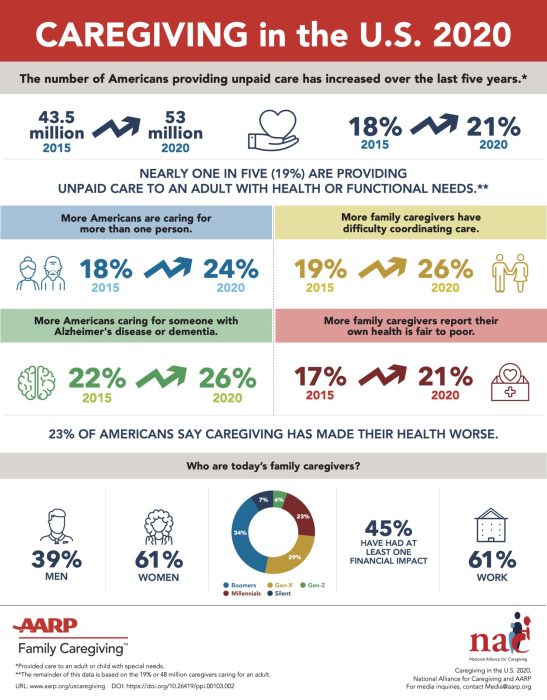
While caregiving duties often fall to spouses, the average caregiver is a 49-year-old woman who works outside the house and provides 20 hours a week of unpaid care to her adult parent, according to caregiving.com, a free resource for care information. Many, 40 percent, live with their parent or parents, a proportion that has grown from 34 percent since 2015, according to the AARP.
Coming home to care for mom
Sally Yeh is one of them. In her 50s, she returned to San Francisco after 18 years in China and a job she loved, to care for her mother. The 90-year-old Mandarin speaker is blind, hard-of-hearing, frail and in pain from falls and broken bones. The adjustment was “tough” for Yeh and her high school-age daughter.
Those early months were spent understanding her mother’s condition, filling out forms and looking for the right caregiver. It wasn’t easy. “Mom wakes up in the middle of the night screaming. She doesn’t say what’s bothering her and it’s hard to understand what she wants.”
After 11 caregivers walked out on her – “I never fired one,” she said – she finally found one to stay with her mother during the night. Yeh covers the daytime hours.
Yee was a filmmaker in China and wanted to resume work here, but her three siblings, all older, convinced her to remain at home since she lives near her mother in the Sunset District and had the most knowledge of her mother’s condition, having accompanied her to all her doctor’s visits.
“It’s exhausting. While I only have a 12-hour shift, I’m on 24-hour alert. It’s the emotional issues that are the most difficult.”
What to do all day?
For 52-year-old Peggy Flores, the greatest hurdles in caring for her mother are hygiene and entertaining her. “It’s what to do all day? It’s the two of us all day, every day.”
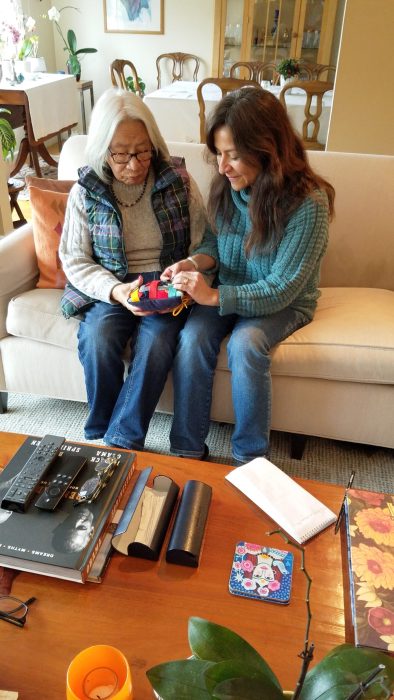
Her mother, now 86, used to craft, sew, read, take walks. “She can’t do any of that now,” said Flores.
Since being diagnosed with dementia, her mother can’t focus long enough to accomplish anything. She quickly gives up on any project, using the excuse that she’s done enough of it in her lifetime, Flores said. Short-attention spans and the inability to remember things you once did regularly are symptoms of mid- to late-stage dementia.
Before Covid, Flores worked full time in the design field and hired care for her mother. But after she lost her job in the pandemic, it’s been just the two of them.
Their main outdoor venture is an adult day co-op designed to offer respite care for caregivers of family members with dementia or other chronic conditions. Flores attends DayBreak, held at the San Francisco Institute on Aging’s Enrichment Center in the Presidio, two days a week with her mother. “The setting is beautiful with the light pouring in,” said Flores. “There’s music all the time.”
Her mother likes to watch others dance and moves her shoulders and arms to the music, she said.
Flores also volunteers there, which reduces the cost of the program. She’s available for conversation, games, and wherever she’s needed—setting the table for lunch, serving, walking and talking with people. One of her favorite roles is returning ping-pong balls to two older men who love to play but can’t reach for a ball.
“I like that I’m there for mom. And the camaraderie, the exchange of ideas; they get it,” she said. “It gives me more structure, and it alleviates the feeling that I am the only one doing it. Your friends don’t understand.”
Before they get in the car to return home, Flores gathers activity sheets with ideas for games to play at home, like coloring and word search, throwing balls of socks into a laundry basket, patty-cake.
Still, the caregiving hasn’t been without sacrifice. Her husband is a pilot and they used to travel. They can’t leave her mother alone now, so they’re staying home. “It’s trial by fire if you’ve never done it before. It’s a long, long journey. It’s hard as a child to see your parents deteriorate.”
Taking Mom to work
Michelle Salas introduces herself as overwhelmed. She juggles caregiving for a mother with late onset Alzheimer’s, the aging family dog and a parrot who can live to 100 while managing a local restaurant. She cleans at 2 a.m. before falling into bed and dreaming about sleeping till noon.
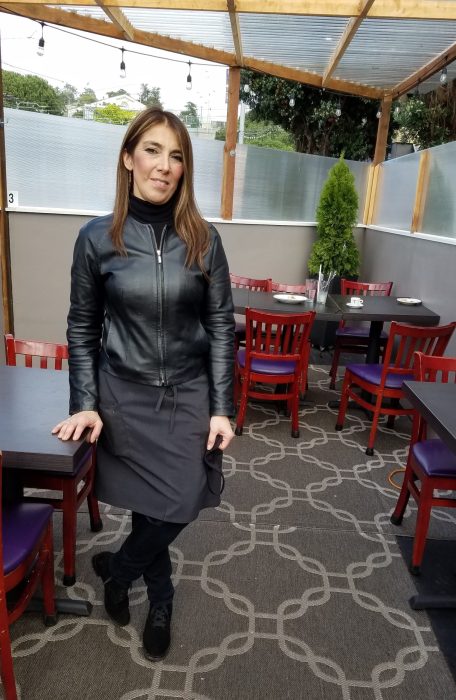
Before the diagnosis, her mother traveled for Salas’ home business, importing hand knit baby clothes from Peru. But when vendors in Peru began reporting strange behavior and her mother brought back items not on her list, Salas closed the business. Six years ago, she left a job in investment banking. Caring for her mother while working from home just got to be too much.
“They tried their best to keep me on board … and I tried my best to be available, as I understood the nature of the business,” she said. “Unfortunately, it was difficult for me. I pulled all-nighters numerous times since it was the only time it was quiet enough for me to focus on my work.”
While managing a restaurant can be physically demanding, the switch to take-out when the pandemic barred indoor dining meant she could bring her mother along. While Salas worked, her mother helped with simple chores. The restaurant was near their home and the owner – “he understands family values,” she said – was accommodating.
The resumption of indoor dining ended that arrangement; for one, she could no longer commandeer a table for her mother to fold napkins. “Lots of times, I was busy tending to customers when I realized that I haven’t given mom anything warm to drink.” Her mother also helped out by delivering food or drink to a table. But she realized her condition was deteriorating when “she didn’t always remember the reason why she was being sent to a particular table.”
And her mother had begun “sundowning,” an Alzheimer’s complication including confusion, anxiety and aggression in the late afternoon and early evening. “Sometimes she’s incoherent,” Salas said.
Not wanting to inconvenience co-workers or the restaurant, Salas began leaving her mother at home, relying on friends to look in. She’d love to have someone at home with her mother, but hasn’t been able to get caregiving help through Medi-Cal. Their income isn’t low enough.
“San Francisco has a lot of programs, but it doesn’t have enough help for people living alone who are middle class,” she said. “It takes time to work through the bureaucracy, to work around the system.”
Salas also had her own problems. She lost her health insurance years ago. She hasn’t seen a doctor for years. “I’m juggling, gambling.”. She had her own plans, too — places she wanted to visit, including Puerto Rico to visit her ailing father, and things she wanted to do. But she couldn’t leave her mom.
But, after more than three years of trying, her mother is now on IHSS. Salas gets paid for taking care of her. And that allowed her to go visit her father last summer.
For more information about training to be a family caregiver, contact The Family Caregiver Alliance, call 800-445-8106 toll-free.
Next in the Series:
Thursday, May 12: Neighborhood and ‘village’ networks provide mutual support for seniors as aging makes daily tasks more difficult. Within eight years, a third of San Franciscans will be 60 or older, and according to various studies about a third will live alone. In 2020, that would have been about 54,000 seniors. The ones who have no family, or none that live nearby, are turning to neighbors to form support networks for help with everyday tasks they’re having trouble with – getting to a doctor’s appointment, shopping for groceries, changing a lightbulb –temporarily or long term. Some of these neighborhood networks are informal; others involve low-cost memberships that offer support as well as activities.



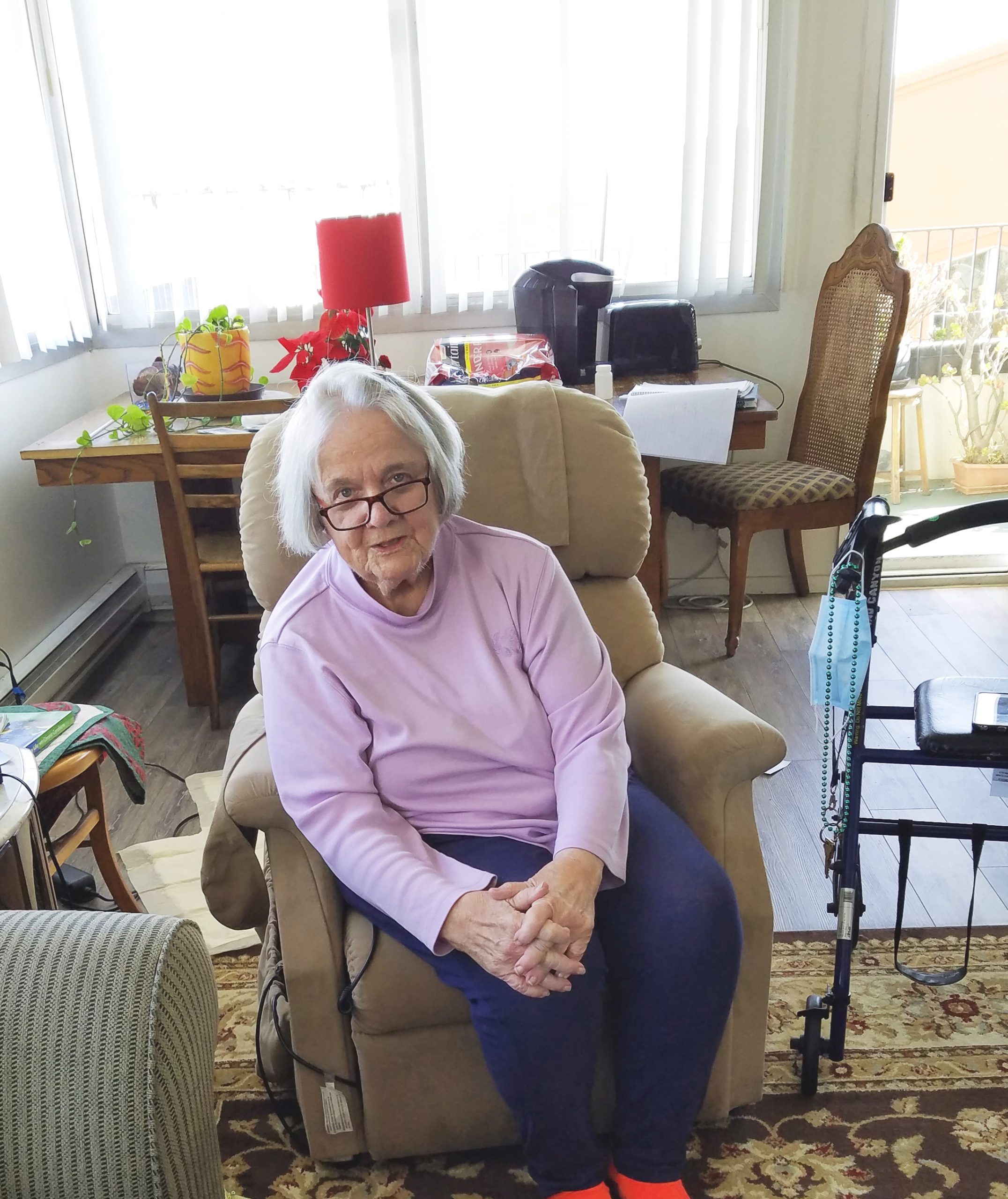
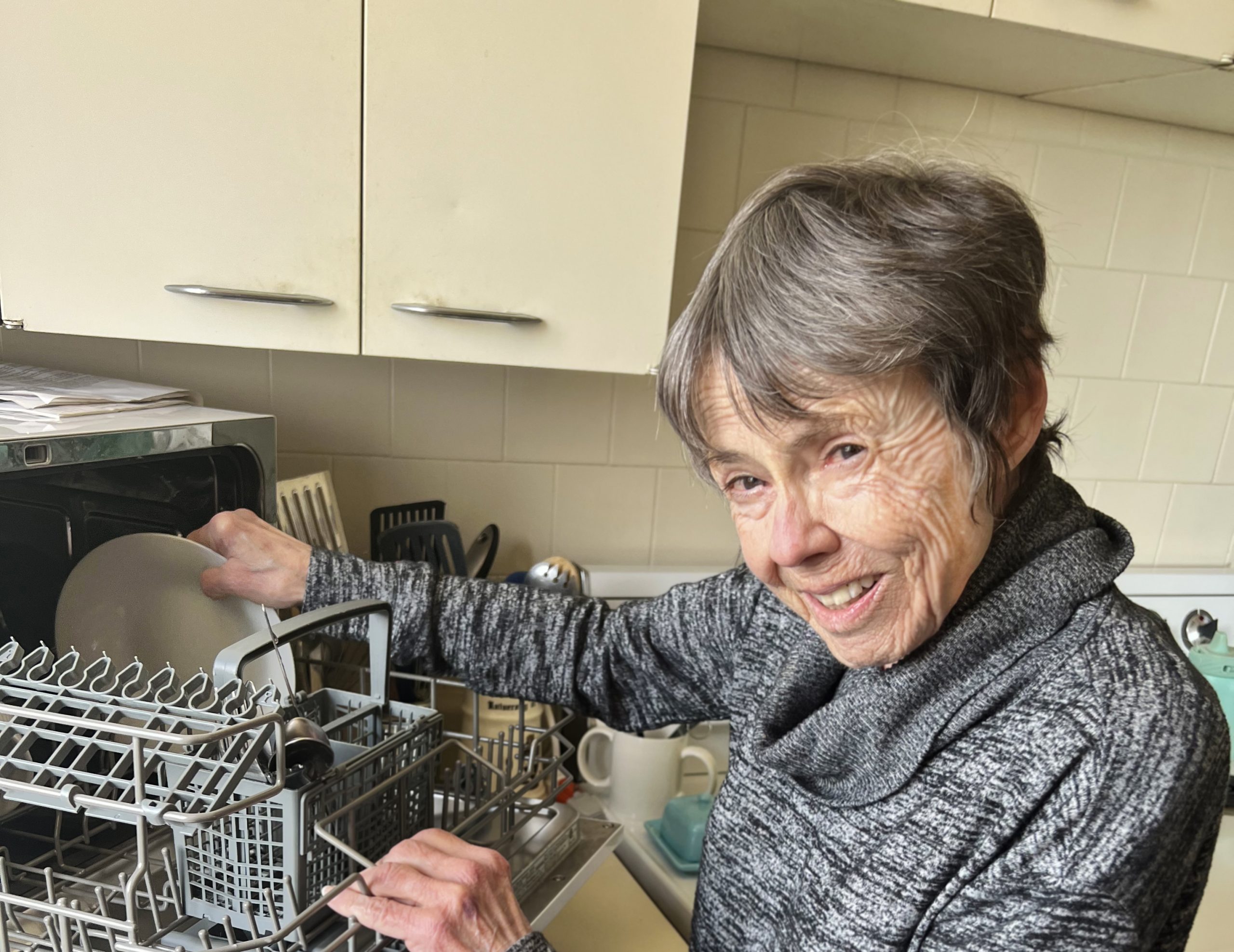
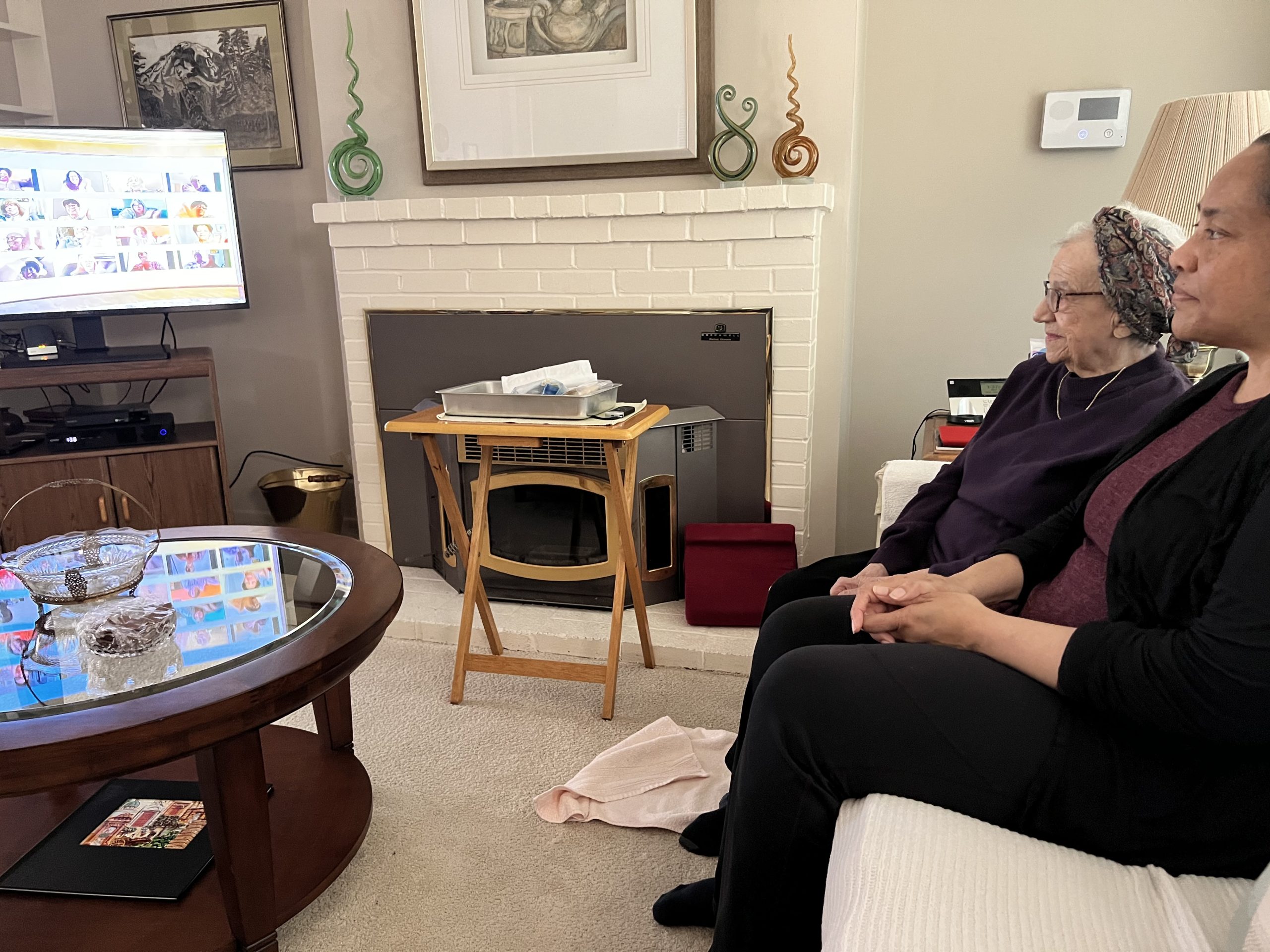
Marina Teramond
Unfortunately, any severe disease completely changes a person’s life and takes away his chance to feel complete. It is truly difficult to read all these stories because so many people sacrifice their lives to take care of their loved ones and they are so strong. Quite frankly, I admire all these people because each of them deserves respect and each of them is a role model which demonstrates how it is important to stay with your loved ones in the most difficult periods, providing them with support. For example, I am amazed with the decision of Sally Yeh because she did such a noble act and, for me, it is a true manifestation of love. Not any person will be able to drop everything to take care of his mother. Of course, it is psychologically devastating and it is a huge stress, but I think that it is always important to believe in the best, keeping positive attitude, to cope with everything.
Peggy Flores
Judy, I've been enjoying reading all the articles on caregiving and I also just read the one above where you write about my own experience with mom. I am so intrigued by all the other caregivers in my boat. Once again you don’t feel so alienated reading these and it gives you a sense of community, along with newfound knowledge. Thank you!
SHEILA MALKIND
WELL WRITTEN & GOOD INFO, BUT TOO MUCH TO DIGEST FOR ONE ARTICLE/ONE SETTING